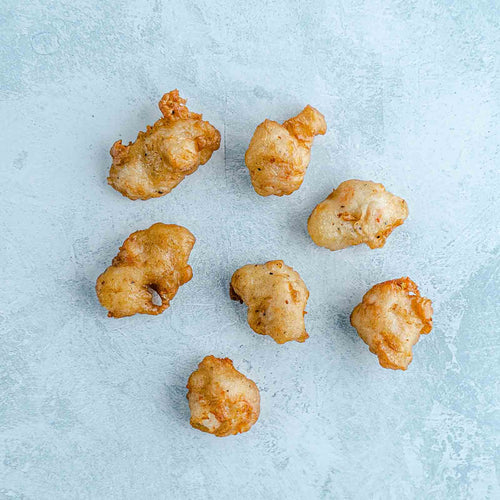Tristan da Cunha lobsters

We at The Fish Society have committed ourselves to taking sustainability very seriously. This is an especially difficult task when you have built your business on selling those items that others shy away from, but the magnitude of the task ahead does not faze us one bit. In fact, it excites us! Believe it or not, the process of looking into each of our products and researching them has been incredibly interesting and very rewarding.
Our research has forced us to switch supply on a few items and we have stopped selling others. It has also forced us to find brand new suppliers that we didn’t know were out there. But more on that in future blogs. For now, let's talk about the most recent product that we put under the microscope - our rock lobster tails. We have been dealing with lobster tails and whole lobsters separately as we get them from different places so, in this article, I’m going to be talking specifically about the rock lobster tails. We don’t plan on creating a whole blog post every time we make a big decision, but we felt this one warranted it. You’ll see what I mean!
In our catalogue we have two options for rock lobster tails; the Rock Lobster Tails or the Coldwater Rock Lobster Tails. The non-Coldwater ones have always come from the Caribbean and Brazil. Our research has told us that in this region, there are currently very few credibly sustainable sources and we’re unsure whether we could access these reliably. So we have decided to stop selling the Caribbean rock lobster tails (We have a few left, but they will sell out shortly). We will continue selling the Coldwater Rock Lobster Tails, and will sell a sustainably acceptable alternative as and when we can get them. Now we come to the bit I’ve been dying to talk about.

The cold-water rock lobster tails come from a fascinating group of islands named Tristan da Cunha. Tristan da Cunha is the world's most remote inhabited archipelago. They’re in between Saint Helena, the Falkland Islands and South Africa. The inhabited island, which is also named Tristan da Cunha, has only about 98 square kilometres of land and a population of 245 permanent residents. The other islands in the archipelago are Gough Island, Inaccessible Island and Nightingale Islands. Gough Island and Inaccessible Island are both wildlife reserves and the only habitation on them is in the weather station on Gough Island. The islands have no airstrip, so the only way to reach the main island is by boat, which is a six-day trip from South Africa.
The main business of the island is the fishery which specialises in the aptly named Tristan da Cunha Rock Lobster (Jasus tristani). They catch the lobsters using box traps, monster traps and hoop nets. The fishery became MSC certified in 2011 and around 400 tonnes of lobster are landed each year. Every morning during the fishing season, two fishermen will survey the weather and if they think it’s suitable, they will sound the gong to announce a fishing day. When the call is heard, members of the community including – we are told – “plumbers and electricians”, will head over to the fishery [ed – how many electricians/plumbers do 245 people need?]. In the evening, when the catch is pulled in, more members of the community join them to help pack the day's catch. Since the fishery accounts for 80% of the island’s revenue, and the weather limits their fishing times to 30 – 40 days per year, all the islanders pull together to ensure the fishery functions smoothly.

In 2020 Tristan da Cunha made a commitment to the UK government to assist with the efforts to make 30% of the world’s oceans by 2030. They announced that 700,000 square kilometres of the waters surrounding the islands would become a Marine Protected Area, the biggest Marine Protected Area in the South Atlantic. So, as you can imagine, we are very proud of the lobster we get from them and are so pleased to be able to offer them to you!
There’s an important footnote to this tale, which is that the Tristan da Cunha tails are more expensive than those from Brazil or the Caribbean. This is quite a big issue, which we will of course have to face up to often as we improve our sustainability stance. Hey ho!
New in
Find exactly what you want. We sell 200 kinds of fish - way more than anyone else.
SHOP NEW IN














